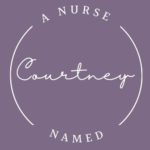According to the Center for Disease Control and Prevention, aka the CDC, every 3.5 minutes someone dies of a stroke in the United States. Which is why learning what classifies as a stroke, its risk factors, symptoms and treatments are so important.
What is a Stroke?
There are two different types of strokes: ischemic and hemorrhagic.
Ischemic Strokes
With an ischemic stroke, a blood clot becomes lodged in an artery in the brain. This clot blocks blood flow either partially or completely causing lack of blood flow and therefore oxygen to parts of the brain. Depending on where the clot is, this determines how severe the symptoms are and what they are. When parts of the brain aren’t receiving adequate blood flow, the brain dies. Which is why treatment for ischemic strokes must be done in a timely manner before brain death occurs and is therefore irreversible.
Hemorrhagic Strokes
With hemorrhagic strokes, a blood vessel in the brain has ruptured. This rupture causes a hemorrhage in the brain, hence the name. The blood flows out of the vessel and into other parts of the brain, causing extreme pressure which can lead to brain cell death. With hemorrhagic strokes, it is equally important to start treatment in a timely manner.
TIA
Sometimes when strokes are addressed right away and don’t lead to severe health repercussions, they are classified as a TIA’s. TIA stands for Transient Ischemic Attack, also known as a ‘mini-stroke‘.
Risk Factors
Risk factors for stroke determined by the CDC, aka the Center for Disease, include:
Comorbidities such as:
- Hypertension – high blood pressure
- Hypercholesterolemia – high cholesterol
- Heart disease
- Diabetes, type 1 or type 2
- Obesity
- Sickle Cell
- Prior strokes or TIA’s
Lifestyle risks:
- Poor eating habits – eating foods high in saturated fats, trans fats, cholesterol, and salt
- Living a sedentary lifestyle – not getting enough exercise
- Drinking alcohol
- Tobacco use – cigarettes, nicotine, and secondhand smoke
Symptoms
The hallmark sign of stroke includes numbness and tingling in the left arm. However numbness can occur in the face, either arm, or leg. Sudden confusion, difficulty speaking and seeing, trouble walking related to dizziness and loss of balance, and severe headache are additional stroke symptoms. Visit Nursing Fundamentals: A Guide to the Cranial Nerves and How to do a Complete Nursing Neurological Assessment for more info.
It is important to recognize the symptoms and teach patients how to recognize one since strokes are one of the leading causes of death. Because of this, a pneumonic was created, B.E.F.A.S.T. Visit Patient Education: How to Spot a Stroke a Save a Life for more information on this mnemonic.
Treatment
After educating patients on how to recognize a stroke and call 911, patients will typically receive the same types of treatment in the hospital setting depending on which type of stroke they are having.
Ischemic Stroke Treatment
For ischemic strokes, the goal is to break up the blood clot that is causing the lack of blood flow. The most widely used medication to do this is stroke patients is a medication called tPA, or tissue plasminogen activator. tPA will be administered intravascularly and has to be given within a certain time frame from the onset of stroke symptoms, typically within 3 hours.
Hemorrhagic Stroke Treatment
For hemorrhagic strokes, the goal is to control the bleeding and decrease the pressure on the brain caused by the hemorrhage. To do this, we need to make sure the blood isn’t too thin, for example if the patient is on blood thinners this will increase the amount of bleeding in the brain. There are also surgical procedures that can be done to stop the bleeding and decrease the pressure such as surgical clipping and coiling.
Stroke Rehab
Regardless of what type of stroke a patient may have experienced, there is likely going to be some sort of damage done to the brain that requires rehabilitation to repair. Physical therapy paired with occupational therapy can be especially beneficial to a post-stroke patient.
Patient Education
Educating patients on how to recognize a stroke is super important as strokes are one of the leading causes of death. If you haven’t yet, visit Patient Education: How to Spot a Stroke a Save a Life for patient education. In addition to educating patients on stroke recognition, it is important to teach healthy lifestyle choices such as smoking cessation, alcohol avoidance, adequate exercise, and clean eating. In addition to lifestyle, patients should also be educated on managing any comorbidities they may have. Patients also need to be made aware that once they suffer from a stroke, their risk of having another one greatly increases, which means determining the underlying cause and catering patient education based off that specific need is even more important.
If Left Untreated…
When strokes aren’t recognized and treated early on, they can lead to serious health concerns that impact day to day living. Depending on where the stroke occurred in the brain, it can impair things like walking, talking, breathing, and so on. And if the stroke isn’t treated in a timely manner and enough brain death occurs, the stroke can prove fatal. So remember to educate your patients on the signs and symptoms of strokes so they are able to recognize it and seek help immediately!
Do you treat patients suffering from strokes? Comment below!
Plus be sure to check out the following:
- The Role of Rapid Response Teams in the Hospital Setting
- The Role of Code Teams in the Hospital Setting
- And the rest of the Patient Education Series here!

